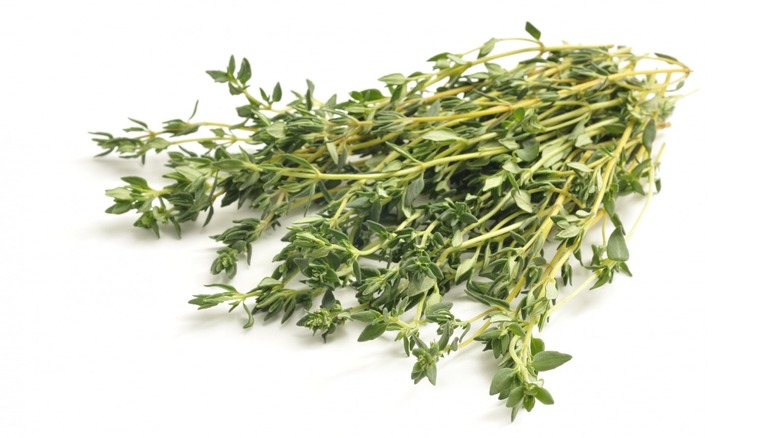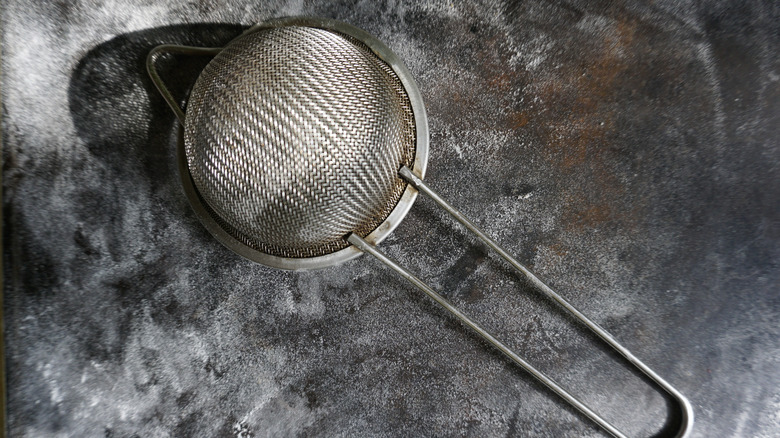The Viral Hack That Makes Stripping Thyme Leaves From The Stem A Breeze
Chances are, if you enjoy cooking, you have a relatively robust spice collection that includes a fair amount of dried herbs. They're convenient to have on hand, can last about two or three years if stored properly, and are a fantastic way to add flavor to just about any dish you're making.
For certain recipes, though, nothing compares to the flavor and fragrance that fresh herbs can add (and some even prefer to swap them out in recipes that call for their dried versions). However, while some herbs like basil have large leaves that are very easy to pluck from the plant, thyme is an entirely different matter. As anyone who has cooked with fresh thyme knows, the tiny leaves certainly enhance your dish, but they take absolutely ages to strip from the stem.
Before you start automatically reaching for the dried version of this herb for convenience, you'll want to check out a few hacks shared on social media that can speed up the process. One easy tip posted on TikTok requires no additional equipment. As the creator demonstrates, you simply pinch your fingers down the length of the thyme sprig, stripping the leaves in one fluid motion rather than individually. He does advise that you start about an inch down from the top in order to skip over the tender portion of the stem that breaks off easily when handled.
Need an even faster trick?
The simple tutorial quickly received over 3,000 likes for being, as one commenter put it, a "HUGE thyme saver."
@the_eugefood Reply to @downtonabbeycooks It is thyme #thyme #getcooking #ScienceFair #learnontiktok #tiktoktaughtme
However, if you need large quantities of thyme and even the TikTok hack seems a bit too slow, there's another method you may want to try. All it requires is a fine mesh strainer of any size, and you won't be left with fingers that smell like thyme (which could either be a good or bad thing, depending on your view of the herb). Instead of starting at the top and running your fingers down the thyme stalk, you'll feed the very bottom of the stalk through a hole in the strainer and then pull the herb through. You should be left with a stripped stalk and several leaves collected in the strainer. You can repeat this quickly for an entire bundle of thyme, allowing you to take the leaves off larger quantities in no time at all.
For either hack, you should also gauge the thickness of your thyme stalks. If you need to strip the leaves, try to select sprigs with stalks that appear a bit tougher and thicker, as it'll make the stripping process easier. Thyme with softer, more pliable stalks should be used in dishes where you need to incorporate the entire sprig of thyme.

